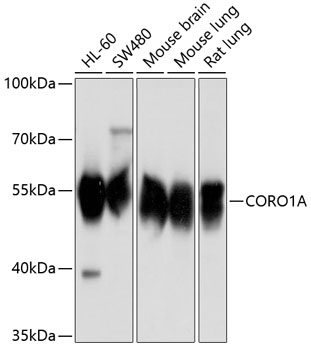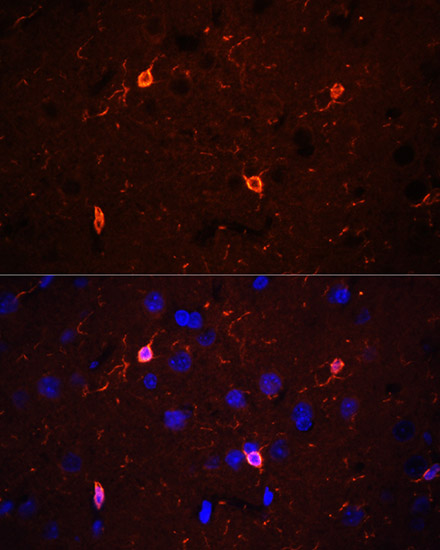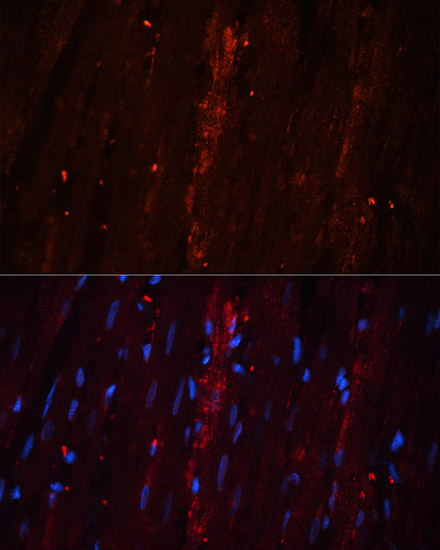-
Product Name
CORO1A Polyclonal Antibody
- Documents
-
Description
Polyclonal antibody to CORO1A
-
Tested applications
WB, IF
-
Species reactivity
Human, Mouse, Rat
-
Alternative names
CORO1A antibody; CLABP antibody; CLIPINA antibody; HCORO1 antibody; IMD8 antibody; TACO antibody; p57 antibody; coronin-1A antibody
-
Isotype
Rabbit IgG
-
Preparation
Antigen: Recombinant fusion protein containing a sequence corresponding to amino acids 362-461 of human CORO1A (NP_001180262.1).
-
Clonality
Polyclonal
-
Formulation
PBS with 0.02% sodium azide, 50% glycerol, pH7.3.
-
Storage instructions
Store at -20℃. Avoid freeze / thaw cycles.
-
Applications
WB 1:500 - 1:2000
IF 1:50 - 1:200 -
Validations

Western blot - CORO1A Polyclonal Antibody
Western blot analysis of extracts of various cell lines, using CORO1A antibody at 1:1000 dilution.Secondary antibody: HRP Goat Anti-Rabbit IgG (H+L) at 1:10000 dilution.Lysates/proteins: 25ug per lane.Blocking buffer: 3% nonfat dry milk in TBST.Detection: ECL Basic Kit .Exposure time: 1s.

Immunofluorescence - CORO1A Polyclonal Antibody
Immunofluorescence analysis of rat brain using CORO1A antibody at dilution of 1:100 (40x lens). Blue: DAPI for nuclear staining.

Immunofluorescence - CORO1A Polyclonal Antibody
Immunofluorescence analysis of rat heart using CORO1A antibody at dilution of 1:100 (40x lens). Blue: DAPI for nuclear staining.
-
Background
May be a crucial component of the cytoskeleton of highly motile cells, functioning both in the invagination of large pieces of plasma membrane, as well as in forming protrusions of the plasma membrane involved in cell locomotion. In mycobacteria-infected cells, its retention on the phagosomal membrane prevents fusion between phagosomes and lysosomes.
Related Products / Services
Please note: All products are "FOR RESEARCH USE ONLY AND ARE NOT INTENDED FOR DIAGNOSTIC OR THERAPEUTIC USE"
